Guadalupe Castillo, also known as Lulu Limones, is a 28-year-old Chicana barber from Los Angeles. From the time she was in middle school, she had known that she wanted to pursue a career in the hair industry. She started out styling her friends’ hair (and her own) and today works in the barbering industry. A barber is a professional who cuts, shaves, and trims beards and hair. To be sure, her parents did not agree with her pursuing a career in the hair industry.
“My parents always wanted me to go to college,” Castillo said. Her parents immigrated from Puebla, Mexico and hoped their American daughter would become a doctor or lawyer. However, Castillo said that she was not a “bright student” and eventually dropped out of high school when she was a junior. She earned her G.E.D. at the age of 17 and graduated a semester earlier than her peers. Castillo enrolled at Santa Monica College, but she knew school wasn’t for her. She stopped attending after she finished her second semester.
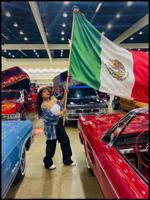
Guadalupe Castillo says she is proud to be Brown at home and at work.
Castillo applied for beauty school at age 18, despite her father advising her to also attend college while attending beauty school. She didn’t listen to dad and never returned to college. But beauty school was not for her either. She still enjoyed fixing up hair, though, and decided to enroll in barbering school.
Her first challenge was to convince her father that it would be OK for a female barber to cut men’s hair rather than women’s hair. He told her that barbering was not a suitable environment for a woman, wondering why she was cutting men’s hair when she could make more money doing women’s hair. Her father finally came around and today she works full-time at a popular shop called Active Barbers in Santa Monica.
When Castillo is not cutting hair, she models for a clothing line called Fashion Town, among other modeling gigs. She said that she has modeled for a year, accomplishing another dream she had since she was young. The coolest part of the job? She says that she’s able to represent her culture through modeling; she lets other girls know that being Brown is beautiful.
CALÓ NEWS spent time with Castillo to learn more about how she represents Chicanas at work and on the streets.
Responses have been edited for clarity and brevity.
WHAT DOES CHICANA STYLE AND CHICANA CULTURE MEAN TO YOU?
My dad would always remind me that I was Brown, beautiful, and Mexican. He would always make me feel proud to be Mexican and explain to me where we were from and where we came from. As I got older, I started to feel like I didn’t fit in because people would tell me different things. When I traveled to Mexico, they would call me a “gabacha” or they would ask me to say something in English. My cousins that immigrated from Mexico to the U.S. would call me a gabacha, and in my head, that meant to be a white person. My cousins would also tell me that I wasn’t Mexican because I wasn’t born in Mexico.
It wasn’t until high school that I started to get a sense of what I liked regarding music and my style. It was pleasant to see people that looked like me when I was going to school in Culver City. It was a predominantly Latino neighborhood. I also did have a lot of White influence because of pop culture but there were things I couldn’t relate to. I remember somebody asking me, “Did you see The Notebook” and I was like, “What’s that?” I also remember watching World Wrestling Entertainment and seeing Eddie Guerrero pull up in a lowrider. I was so amazed that someone that looked like me was on TV.
My dad would always take my family and me to Olvera Street. I would see all the cars and all the dancers. Seeing and making friends with people who have lived here for generations like me was nice. These people would understand that I was Mexican, and they understood my culture. We would sit and talk about things we would relate to. I realized that I would connect with them differently compared to the people who weren’t Latino or Brown. It was nice to see that I had an identity of not just being Mexican but also American. Being Chicana meant to me that I didn’t have to be one thing. I didn’t have to be just Mexican, Latina, or American.
As you grow up, I think you kind of start to question your identity and it’s almost like when people ask you “What are your pronouns.” It was cool to see that there was a name for something that identified who I was as a Chicana. I love the culture, I love the style and I love the people. It wasn’t until high school that I started learning about Chicano and Chicana culture and its rights and movements. I’ve always been into equality for all types of cultures. I was glad to see that my indigenous roots and my Mexican-American roots could all be put together, and that means a lot to me.
WHEN DID YOU START MODELING, AND WHAT INSPIRED YOU TO REPRESENT THE CHICANA STYLE IN MODELING?

Guadalupe Castillo cuts down barriers in the barbering world.
It has only been a year since I began modeling. Ever since I was a kid, I’ve wanted to be a low-rider model. Chicanas are often associated with Cholas who wear flannels. Yes, I have friends and family members who are like that, and I grew up around people like that, but that is just not me. The clothing I wear consists of flannels, hoop earrings, sunglasses, make-up, and yes, I have tattoos. Someone that doesn’t know me would stereotype me as a Chola and I’m not. In no way am I trying to portray myself as a gang banger, but this is my style. There is nothing more comfortable than wearing a flannel shirt. In middle school, everyone started wearing hoop earrings, and we began to use eyeliners and develop our own style.
I gravitated to this style because growing up I would watch the TV show called America’s Next Top Model and all the models were skinny, blonde and White. Many of the models who were not White had characteristics similar to those of White people. As a child, I remember looking at my body and thinking that I am too fat, too short, and brown. It was difficult for me to feel beautiful in my own skin.
When I would look at the lowrider models, I always wanted to be that model in the back seat, I love that look. The low-rider models bring empowering energy when they model next to the car. I love how it’s women that look like me, women with dark long hair, brown skin, and pretty smiles. These places where women were modeling next to cars were the place to be me and nothing else. These women were proud to be Mexican and proud to wear their Mexican garments and traditional styles. It was authentically them in such a soft way but are still able to demonstrate that strong presence in the way they carry themselves. I love the Chicana style because it feels natural and comfortable to me, and I don’t have to pretend I’m someone that I’m not.
HOW LONG HAVE YOU BEEN CUTTING HAIR AND HOW DID YOU GET INTO THE BARBERING INDUSTRY?
I started beauty school when I was 18 and I just wanted to try it out because I liked doing hair. I remember in 7th grade one of my friends was like, “I want to be a stylist when I grow up,” and I was like, “Me too!” On picture day we would do the other girl’s hair. I would try out different hairstyles and looks on friends. I would also let other people work on my hair.
To be completely honest I did not like cosmetology school at all, I was like, “This is not for me,” so I took a break from it. When I turned 21, I started barbering school and it was the best experience I ever had. Barbering opened so many doors for me and I have met so many people through this. I have been a barber for seven years. It wasn’t until I turned 25 that I started to work full time.
AS A FEMALE BARBER DO YOU FACE ANY CHALLENGES WITH MALE CLIENTS?
All the time! Now that I have more experience, I don’t feel like I face as many challenges as when I first started. A lot of women ask me, “Why do you like cutting man’s hair instead of women’s hair?” and I tell them because women will wait until the end to let me know they don’t like their hair. Guys are usually more straightforward.
When I first started in the hair industry, most men would question how good of a barber I was. They would tell me things like, “Do you even work here?” or “Do you even know what you’re doing?” I would always tell them if I didn’t know what I was doing I wouldn’t be working here in the first place. There was a time where I did start to question myself if I was good enough, because of all the negative comments I was getting. They never question whether a man can cut hair, so why should it be any different from a woman? As time went on, my mentality towards certain situations started to change. Now when I get rude comments, I treat them with the same respect they treat me, or I just brush it off with a joke.
HOW DO YOU EARN THE TRUST OF YOUR MALE CLIENTELE?
I earn the trust of my clients by being honest and building a relationship with them. Many of my first-time clients trust me enough to sit in my chair but also need to trust that I’m able to deliver. I make an effort to give them suggestions to try new things. I just want to make my clients feel good, so I always cater to my clients even if they are picky. Some of my clients come to get a haircut because they are having a bad day and I try my best to make them comfortable enough to open up to me. I feel privileged to have their trust in me. It feels nice for them to feel confident to tell me exactly what they want without knowing me. I treat my clients like friends because at the end of the day these people are helping me put food on my table and I appreciated it.
WHAT ADVICE CAN YOU GIVE TO OTHER FEMALES WHO WANT TO BE BARBERS IN THIS MALE-DOMINATED INDUSTRY?
My advice as a barber is to learn to take criticism and never stop learning. Get out of your comfort zone, try different techniques, and try different equipment to see what works for you. Educate yourself as much as you can, attend barber events and go to competitions. Also, don’t be afraid to ask for help.
My advice as a woman in a male-dominated industry is to not be afraid to say “no.” Don’t be afraid to stand up for yourself and set boundaries. In this industry, you need to have thick skin. I was able to navigate some of these situations with clients because of how strong of a woman I am. I grew up with a lot of male cousins, so it was easy for me to gravitate toward the barber shop environment.
In this industry, you are bound to encounter a number of people who will speak poorly of you due to your gender but don’t allow it to discourage you. As a woman in the industry, it is beneficial to make friends with other women. Having the opportunity to meet other women who work in the same male-dominated industry is a real relief because you can relate to one another. I also appreciate using social media to allow women to follow my journey and ask for advice and share similar experiences with me. This is the advice I give out to women and other female barbers who are interested in this industry.


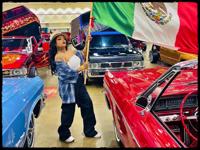

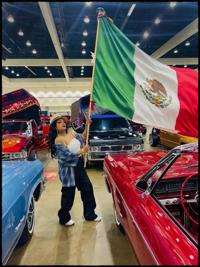

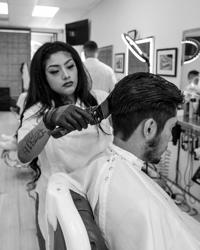
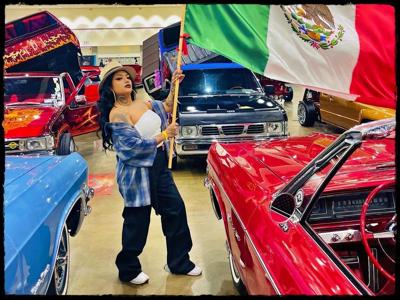

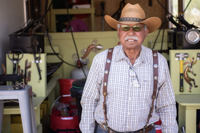

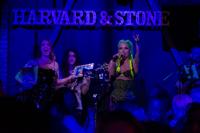

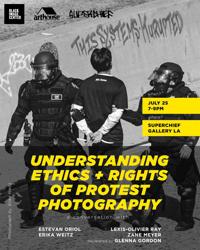


(0) comments
Welcome to the discussion.
Log In
Keep it Clean. Please avoid obscene, vulgar, lewd, racist or sexually-oriented language.
PLEASE TURN OFF YOUR CAPS LOCK.
Don't Threaten. Threats of harming another person will not be tolerated.
Be Truthful. Don't knowingly lie about anyone or anything.
Be Nice. No racism, sexism or any sort of -ism that is degrading to another person.
Be Proactive. Use the 'Report' link on each comment to let us know of abusive posts.
Share with Us. We'd love to hear eyewitness accounts, the history behind an article.